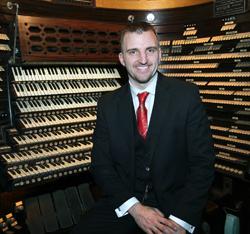
Steven Ball has been named Resident Organist and Director of Outreach and Fundraising for the historic pipe organs at Atlantic City’s Boardwalk Hall. In this newly created position, he will manage fund-raising for the Historic Organ Restoration Committee at the hall.
Ball will showcase Boardwalk Hall’s 7-manual/449-rank Midmer-Losh (opus 5550), which is the world’s largest pipe organ, as well as the 4-manual/55-rank Kimball (KPO 7073) installed in the Adrian Phillips Ballroom—the largest unaltered example of a theatre organ by Kimball. Ball will provide tours of the famous organs and will conduct free public performances. Information about the Boardwalk Hall organs is available at www.boardwalkhall.com/organs.asp.
Ball has served as University Carillonneur and as a faculty member of the organ department at the University of Michigan, where he was director of the Stearns Collection of Musical Instruments. He also held positions as senior staff organist at the Michigan Theater in Ann Arbor and cathedral organist at Blessed Sacrament Cathedral in Detroit. He was recently appointed Artist in Residence at Philadelphia’s historic Roman Catholic Cathedral Basilica of Sts. Peter and Paul.
His biography is available at www.StevenBall.com.


